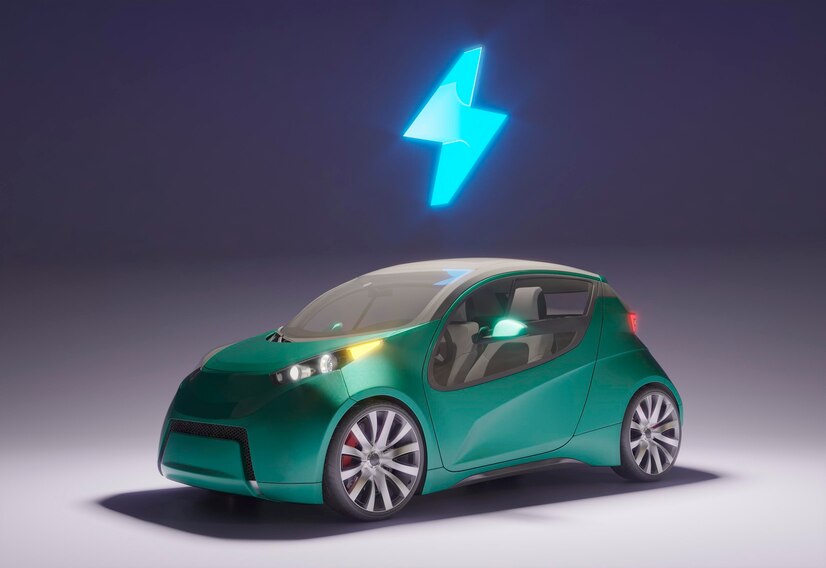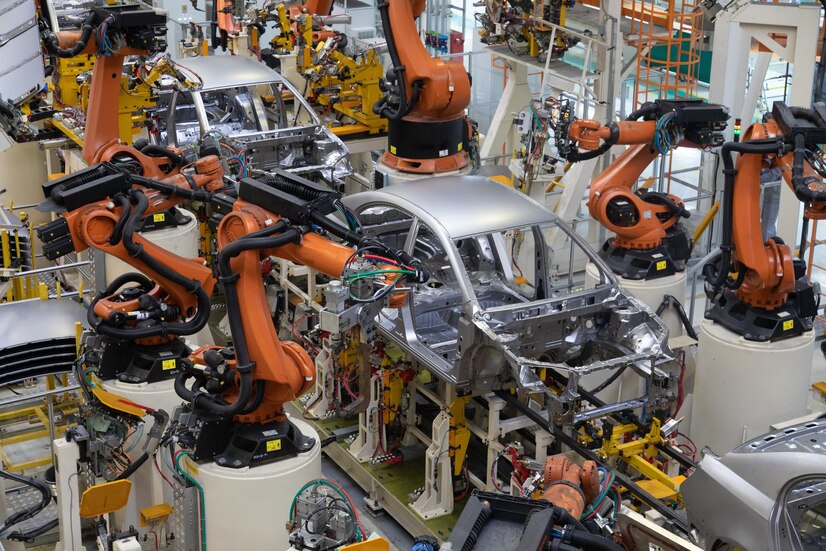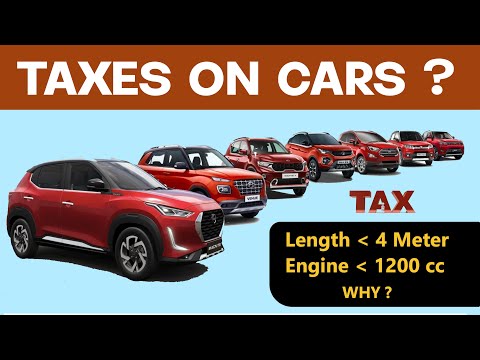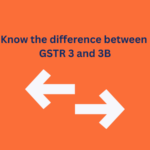Key Takeaway
- The GST regime for automobile spare parts simplifies taxation with a uniform rate of 18% for most components.
- Businesses should use correct HSN codes and stay updated on current GST rates to ensure compliance.
- The GST implementation has reduced overall tax burdens by streamlining rates and offering input tax credits.
- Electric vehicles benefit from a significantly lower GST rate of 5%, promoting cleaner transportation options.
- Used cars attract a standardized GST rate of 12% or 18%, depending on engine capacity, making them more affordable.
What is GST (Goods and Services Tax) on Automobile Spare Parts?
The Goods and Services Tax (GST) is a comprehensive tax levied on the supply of goods and services in India. Introduced on July 1, 2017, GST has replaced multiple indirect taxes that were previously imposed by the central and state governments. When it comes to automobile spare parts, the GST regime has brought significant changes, streamlining the tax structure and ensuring uniformity across the country.
Clutch assemblies, gearbox assemblies, radiator assemblies, and other pieces of automobile spare parts are classified by certain Harmonized System of Nomenclature (HSN) designations.

The relevant GST rates for various components are made easier to identify with the use these codes. Parts and accessories for motor cars with the HSN code 8708, for example, are subject to an 18% GST. The tax process is made easier for companies to comply with laws by this unified GST rate.
Concessions made by the Indian government on specific car parts for handicapped individuals have reduced the cost of necessary mobility aids. Specialty vehicles with their own HSN codes and GST rates include breakdown trucks, concrete mixer trucks, crane trucks, refrigerated motor vehicles, and delivery tricycles. For companies engaged in the production, sale, or maintenance of these vehicles, knowing these codes and rates is essential
Effective Tips for Businesses: Managing GST on Auto Parts Inventory
With the different rates and rules, managing GST on auto components inventories can be difficult for companies. These practical advice will help to guarantee compliance and expedite the procedure:
Classify Parts Correctly: Use the correct HSN codes for all parts. Misclassification can lead to incorrect tax filings and potential penalties. For example, gearbox assemblies and radiator assemblies fall under different HSN codes and thus may attract different GST rates.
Stay Updated with Current Rates: GST rates can change, so it’s essential to stay updated with the current GST rate for all parts. Regularly check the GST portal or subscribe to updates from reliable sources.
Maintain Accurate Records: All transactions—purchases, sales, and returns—should be meticulously documented. Precise records can be very important during audits and assist in filing GST taxes.
Use GST Software: Invest in good GST-compliance software. This can automate many aspects of GST management, from calculating applicable GST rates to generating invoices and filing returns.
💡If you want to pay your GST with Credit Card, then download Pice Business Payment App. Pice is the one stop app for all paying all your business expenses.
Understand Exemptions and Concessions: Be aware of any exemptions or concessions applicable to your business. For example, certain parts for vehicles used by handicapped people may have lower GST rates.
Training and Awareness: Regularly train your staff on GST compliance and updates. This ensures everyone in the business is aware of the latest rules and regulations.
A Comparative Analysis of Pre-GST and Post-GST Prices of Automobile Spare Parts

With the introduction of the GST, the method that car parts are taxed altered substantially. State-by-state taxes including excise duty, VAT, and CST made up the tax structure prior to the GST. This complex system meant that manufacturers and customers both paid more.
Under the GST system, a single, consistent rate replaced these multiple levies. For example, automotive spare parts including clutch, gearbox, and radiator systems are now subject to the 18% GST rate. This consistency has simplified the tax process and reduced the expense of compliance, therefore promoting trade between states.
Several advantages are shown by a comparison of pre- and post-GST pricing. Firstly, there are now less taxes overall because of the decrease in tax cascading. The cascade of several taxes used to allow the cumulative tax rate on vehicle parts to surpass 25%. Input tax credits lower total tax due and the tax rate is simplified with GST.
Second, customers now have an easier time comprehending the tax they are paying because to the transparency and simplicity of GST. This has raised consumer confidence and occasionally resulted in end-user prices being lowered. Post-GST, Tata Motors, for instance, has reported more consistent pricing and improved consumer clarity.
Some difficulties do still exist, though. Businesses switching from the previous system to the new experienced confusion and compliance problems during the first phase of deployment. Notwithstanding these obstacles, the simplified tax structure and lower costs of GST clearly show the long-term advantages for the car spare parts sector.
The Impact of GST on the Automobile Industry
The implementation of GST has had a profound impact on the automobile industry. By replacing multiple indirect taxes with a single, unified tax system, GST has streamlined the taxation process and brought about significant changes in pricing, manufacturing, and sales.
One of the key impacts of GST is on the cost structure of automobiles. The rate of GST applicable to different types of vehicles varies. For example, the GST rate applicable for small cars is 18%, while luxury cars attract a higher rate of 28%, along with an additional cess. This differentiation aims to balance revenue generation with affordability.
For the auto industry, the introduction of GST has simplified the supply chain. Previously, manufacturers had to navigate a complex web of state and central taxes, leading to inefficiencies and higher costs. With GST, the tax system is uniform across the country, reducing logistical costs and making it easier to manage interstate supply chains.
Electric motor vehicles (EVs) have particularly benefited from the GST regime. The GST rate on EVs is 5%, significantly lower than that for conventional vehicles. This reduction is part of the Indian Government’s push to promote cleaner, more sustainable transportation options. Companies like Tata Motors are increasingly investing in EV technology, driven by these favorable tax rates.

Moreover, GST has also impacted the aftermarket segment. The tax rate on automobile spare parts, including clutch assemblies, gearbox assemblies, and radiator assemblies, is standardized at 18%, which has streamlined the pricing and availability of these parts across the country.
Understanding GST on Cars for Personal Use
GST on cars for personal use varies based on the type and category of the vehicle. The applicable GST rate is designed to reflect the vehicle’s use, value, and impact on the environment. For instance, smaller, more economical cars generally attract a lower GST rate compared to luxury or high-end vehicles.
The GST rate for standard passenger cars is 28%, with an additional cess that varies depending on the car’s specifications. For example, cars with a ground clearance of more than 170 mm and engine capacity exceeding certain thresholds attract a higher cess. This structure ensures that larger, more resource-intensive vehicles contribute more to the tax revenue.
Electric vehicles, which are increasingly popular due to their environmental benefits, are subject to a lower GST rate of 5%. This reduced rate is part of the government’s strategy to encourage the adoption of cleaner technologies and reduce the carbon footprint of the transportation sector.
Special provisions also exist for vehicles used by handicapped people. These vehicles often attract lower GST rates or exemptions to make them more affordable and accessible. The Indian Government’s efforts to support mobility for all citizens are reflected in these tax policies.
How GST Applies to Used Cars
The GST regime has specific provisions for the taxation of used cars, designed to streamline the market and provide clarity for both buyers and sellers. Prior to GST, the sale of used cars was subject to varying state VAT rates, which often led to confusion and inconsistent pricing.
Under the current GST structure, used cars attract a standardized GST rate, which is generally lower than the rate for new cars. The applicable GST rate for used cars is 12% for vehicles with an engine capacity of 1500 cc or more, and 18% for other vehicles. This rate includes both GST and applicable cess, making it easier for sellers to price their vehicles consistently across different states.
The reduced GST rate on used cars aims to stimulate the second-hand car market by making it more affordable for consumers. This is particularly important in a country like India, where the used car market is a significant part of the automotive sector.
Additionally, businesses dealing in used cars can benefit from input tax credits, which help reduce their overall tax liability. This provision encourages formalization and transparency in the used car market, benefiting both buyers and sellers.
GST Rates Based on Car Categories
GST rates for cars are categorized based on the type and use of the vehicle. This classification ensures that the tax burden is appropriately distributed and reflects the vehicle’s impact on the environment and infrastructure.
For small cars, the GST rate is generally 18%, making them more affordable for the average consumer. This tax rates applicable to vehicles with a length of up to 4 meters and engine capacity not exceeding 1200 cc for petrol and 1500 cc for diesel engines.
Luxury cars and SUVs, which have a higher market value and resource consumption, attract a GST rate of 28%, along with an additional cess. The cess varies based on factors like engine capacity and ground clearance, ensuring that more resource-intensive vehicles contribute more to the tax revenue.
Electric vehicles, which are promoted for their environmental benefits, have a lower GST rate of 5%. This reduced rate aims to encourage the adoption of electric mobility and reduce the carbon footprint of the transportation sector.
GST Rates Based on Fuel Types
The Goods and Services Tax (GST) rates for vehicles in India vary based on the type of fuel they use. This differentiation is part of the Indian Government’s strategy to promote cleaner and more sustainable transportation options. By imposing different GST rates, the government aims to encourage the use of environmentally friendly vehicles while ensuring a fair tax structure for conventional fuel types.
Petrol and Diesel Vehicles

Petrol and diesel vehicles are the most common types of vehicles on Indian roads. These vehicles typically attract a standard GST rate of 28%. In addition to the GST, there is an additional cess imposed on these vehicles, which varies based on specific factors such as engine capacity and ground clearance. For instance:
- Small Cars: Vehicles with a length of up to 4 meters and engine capacity not exceeding 1200 cc for petrol and 1500 cc for diesel engines generally attract a GST rate of 28% plus a cess of 1% for petrol and 3% for diesel.
- Mid-size Cars: Cars with an engine capacity between 1200 cc and 1500 cc attract a GST rate of 28% plus a cess of 15%.
- Luxury Cars and SUVs: Vehicles with larger engines and higher ground clearance attract the highest combined rate, with a GST rate of 28% plus a cess that can go up to 22%.
| Vehicle Type | Engine Capacity/Specification | GST Rate | Cess Rate |
|---|---|---|---|
| Petrol and Diesel Vehicles | 28% | ||
| Small Cars (Petrol) | Up to 1200 cc, length up to 4 meters | 28% | 1% |
| Small Cars (Diesel) | Up to 1500 cc, length up to 4 meters | 28% | 3% |
| Mid-size Cars | 1200 cc to 1500 cc | 28% | 15% |
| Luxury Cars and SUVs | Larger engines and higher ground clearance | 28% | Up to 22% |
This high rate of tax for petrol and diesel vehicles reflects the government’s efforts to balance revenue generation with environmental considerations, as these vehicles contribute significantly to air pollution.
Electric Vehicles
Electric vehicles (EVs) are seen as a key solution to reducing air pollution and dependence on fossil fuels. To promote the adoption of electric mobility, the GST rate on cars is significantly lower, set at just 5%. This reduced rate on vehicles, including cars, motorcycles, and commercial vehicles.
| Vehicle Type | Engine Capacity/Specification | GST Rate | Cess Rate |
|---|---|---|---|
| Electric Vehicles | All types | 5% | None |
For instance, Tata Motors, a major player in the Indian automobile industry, has been actively developing and promoting electric vehicles. The lower GST rate helps make EVs more affordable, encouraging consumers to consider them as viable alternatives to petrol and diesel vehicles. This policy is part of the broader National Electric Mobility Mission Plan, which aims to have a significant portion of cars sales be electric by 2030.
Hybrid Vehicles
Hybrid vehicles, which combine an internal combustion engine with an electric motor, offer a middle ground between conventional fuel vehicles and full electric vehicles. However, they do not benefit from the same GST concessions as electric vehicles. Hybrid cars are typically taxed at the same rate as petrol and diesel vehicles, attracting a GST rate of 28% plus the applicable cess based on their engine capacity and other specifications.
| Vehicle Type | Engine Capacity/Specification | GST Rate | Cess Rate |
|---|---|---|---|
| Hybrid Vehicles | Combines internal combustion engine with electric motor | 28% | Varies based on specifications |
The rationale behind this higher tax rate is to encourage the adoption of fully electric vehicles, which have a more significant environmental benefit compared to hybrids. However, the higher tax rate on hybrids has been a point of contention, as these vehicles still offer a reduction in fuel consumption and emissions compared to traditional petrol and diesel vehicles.
Special Categories
Certain special categories of vehicles also have specific GST rates based on their use and fuel type. For example:
- Refrigerated Motor Vehicles: Used for transporting perishable goods, these vehicles are taxed at 18%.
- Crane Lorries and Concrete Mixer Lorries: These commercial vehicles used in construction and logistics have a GST rate of 18%.
- Racing Cars: Classified separately due to their specialized use, these vehicles attract a GST rate of 28%.
| Vehicle Type | Purpose/Use | GST Rate | Cess Rate |
|---|---|---|---|
| Refrigerated Motor Vehicles | Transporting perishable goods | 18% | None |
| Crane Lorries and Concrete Mixer Lorries | Construction and logistics | 18% | None |
| Racing Cars | Specialized use | 28% | High rate |
These differentiated rates reflect the diverse use cases and environmental impacts of various vehicle types.
Encouraging Cleaner Transportation
The varying GST rates based on fuel types underscore the Central Government’s commitment to promoting cleaner and more sustainable transportation solutions. By offering tax incentives for electric vehicles and imposing higher taxes on conventional fuel vehicles, the policy aims to shift consumer preferences towards greener options. This strategy aligns with global efforts to combat climate change and reduce urban pollution, ensuring a healthier and more sustainable future for all.
FAQs
What is the GST rate for brake pads?
The GST rate for brake pads falls under the category of automobile spare parts, which generally attracts an 18% GST rate. This rate applies to most parts and accessories of motor vehicles as specified under HSN code 8708.
What is the GST rate for body kits?
Body kits for vehicles are classified under automobile accessories and typically attract a GST rate of 28%. This higher rate reflects their categorization as non-essential, aesthetic modifications rather than necessary functional components.
What is the HSN code for spare parts?
The HSN code for most automobile spare parts is 8708. This code covers parts and accessories of motor vehicles, including those used for vehicles like cars, trucks, and buses.
What is the HSN for brake shoes?
Brake shoes are classified under the HSN code 8708, which pertains to parts and accessories of motor vehicles. The GST rate for brake shoes is typically 18%.
What is the HS code for car pads?
The HS code for car pads, such as brake pads, is 8708. This code encompasses various parts and accessories for motor vehicles, including braking components.
What is the GST rate for alloy wheels?
Alloy wheels are considered an accessory for vehicles and attract a GST rate of 28%. This higher rate is due to their classification as a luxury item rather than a necessity.
How much GST on tractors in India?
Tractors in India are subject to a GST rate of 12%. This relatively lower rate is designed to support the agricultural sector and make farming equipment more affordable for farmers.








